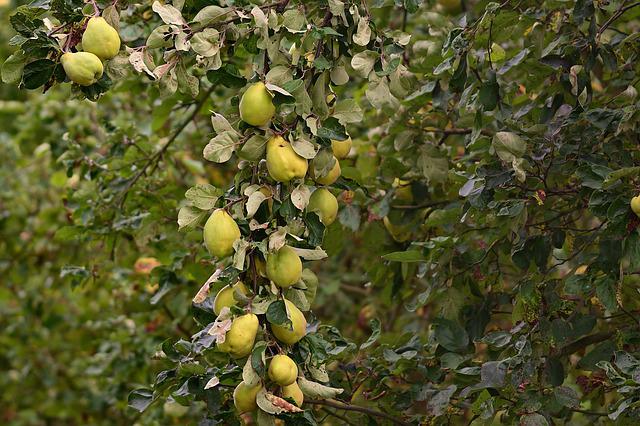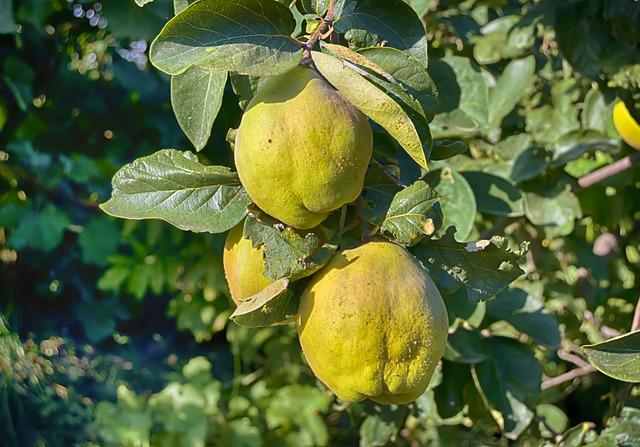How to Prune Quince Tree? Know-How to Properly Pruned Your Quince

Prune quince tree in the late winter, just before new growth begins. Cut off dead and diseased branches close to the trunk. Make cuts at a 45-degree angle away from the trunk. Do not prune back so far that you kill fine twigs or buds needed for fruit production.
Are you interested in learning how to prune a quince tree? If so, this article is for you. In it, we’ll provide you with the basic info you need to get started and guide you through the steps necessary to prune a quince tree. We’ll also discuss how to prune young and mature quince trees. So if you’re looking to start quince tree pruning, read on!
Table of Contents
Pruning Young Trees
- Cut back on young trees in the spring and fall. For the first three years, prune twice a year, once in the summer after fruiting is complete and once in the winter before the buds begin swell. Prune on a dry day to avoid spreading disease or infection.
- Unless the tree is diseased or severely damaged, you shouldn’t prune more than a third of its branches after the first year. In the first year, you may need to prune more heavily to train the tree to grow in the desired shape. However, you shouldn’t remove more than half of the new growth.
- Remove any diseased or dying leaves during the summer months. Foliage that prevents sunlight from reaching the fruits should be removed.
- Reduce the new growth from the previous season by about a third every winter.
- In the first year, prune your tree to the shape you want it to have. The most common form for a quince tree is a vase or goblet with an open center. The tree’s open center receives more sunlight, speeds ripening, and increases yield. You can shape the tree to your liking by using clean, sharp lopping shears and pruning shears.
- Select three sturdy branches to use as the basis for your vase. The distance between these forks should be reasonable. Remove any branches that interfere with your intended form.
- Maintain a sense of perspective as you prune. Foresight into where growth is most likely to occur during the winter months can be gained by studying photographs taken of the tree when it was in full bloom during the previous summer.
- Dead, diseased, or otherwise damaged limbs should be amputated first. In order to get rid of any damaged or problematic branches, you should prune them back to their trunk using lopping shears or pruning shears. Then, prune the tree’s branches growing too tall or crossing others.
- After the problematic branches have been pruned away, it’s possible that further pruning isn’t required, beyond the initial cuts made to train and shape the tree.
- Train the tree by manipulating where the buds form. It is only natural for the branch to bend toward the bud as a result of the weight of the fruit. Pick a bud closer to the underside of the branch if you want it to bend lower.
- Cut at a 45-degree angle that slopes away from the bud. When cutting an angle, ensure the cut’s bottom is on the opposite side of the branch from the bud. Cutting too deeply will cause the bud to withering.
- Do not make any further cuts up the branch unless you intend to cut it off entirely. You might break the heart of the branch you’re leaving behind. Tearing can be repaired with a sharp pocket knife.
- After the second year, remove the trunk entirely. By removing the sapling’s ability to produce new growth in the middle, you can train the tree to take on a more symmetrical vase form. To make a vase out of the highest branch on your tree, cut the trunk at a 45-degree angle. If any other branches invade your personal space, cut them back to where they originated.
- It ought to be possible to remove the crown using a pruning saw. You can also use a chainsaw, but you should be very careful.
Pruning an Established Tree
- Establish trees once a winter and prune them. Once your tree is three or four years old, annual pruning is all that’s required. The month of December in the Northern Hemisphere and the months of July and August in the Southern Hemisphere are typical for this.
- An every-other-year pruning schedule might be sufficient for mature trees. Even in years when you don’t perform a complete pruning, it’s important to keep a close eye out for any dead or unproductive branches.
- Older, thinner branches are packed tightly together. Although quince fruit thrives in bright sunlight, the quince tree is notorious for its haphazard and overcrowded growth. To keep your trees established to shape, you need to remove any vertical branches growing from the trunk.
- Trim back any older branches that aren’t budding or showing significant growth.
- Leave some space in the middle of the tree. Quince trees have a messy, bushy growth pattern that can quickly overtake the tree’s intended form and appearance. When your tree has reached full maturity, you should prune it so that the center is free of branches but still neat.
- To avoid a tangled and overgrown central area, cut out all vertical branches in the middle.
- Remove any growth that isn’t wanted. Removing dead wood from the tree’s branches can do wonders for its overall form. However, a branch should be pruned if it is rubbing against another or growing upward from the trunk.
- It is possible to prune away most of the tree’s vertical branches. They will undoubtedly make the trip to the next fork in the road. By completely removing them, you can prevent them from growing back in an undesirable location.
- Throughout the year, cut off tree suckers and water sprouts. Suckers and waterspouts are rapid shoots that can appear anywhere on the tree but are most common near the ground or the tree’s base. They won’t help your tree in any way, as they won’t be able to bear fruit themselves.
- The likelihood of them returning is diminished if they are eliminated as soon as possible. Besides this, if you let them keep growing, they will continue to compete with your tree for food.
- Always leave a space of 3.5 to 4 feet (1.1 to 1.2 m) between the ground and the base of a mature quince tree.

How Often Should You Cut Back Quince Tree?
Quince fruit trees need annual pruning to keep producing. Don’t forget to put “pruning quince trees” on your list of garden chores. Overgrown quince trees that haven’t been pruned for several years won’t produce as much fruit as their more manageable counterparts. Don’t worry if you have no idea how to trim a quince. Learn when and how to prune your quince with our help.
